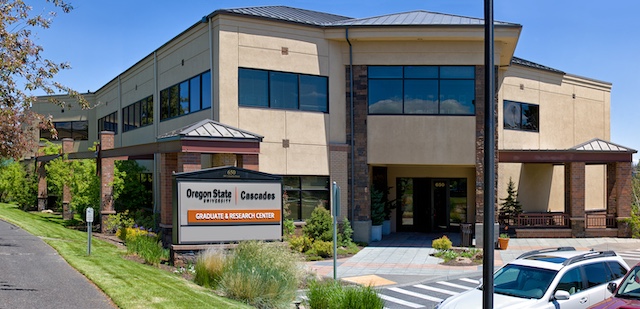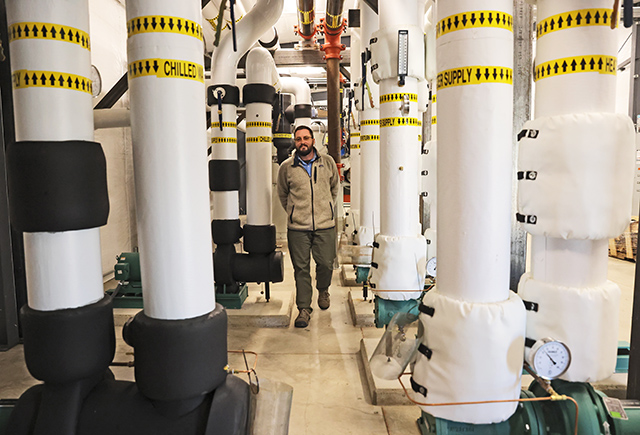‘The potential is huge’: AltaRock pursues geothermal energy at Newberry Crater
Published 5:45 am Friday, July 19, 2024

- In this October 2010 photo, a technician works on drilling a small test well just southwest of the Newberry National Volcanic Monument to measure temperatures and take samples of the different rocks up to 3,500 feet below the surface.
A geothermal exploration company that has conducted testing at Newberry Crater south of Bend says the potential for superhot-rock energy development remains a possibility, but more testing is needed to prove project viability.
Seattle-based AltaRock Energy plans to continue testing this summer on its deep wells located on the western slopes of Newberry Crater, according to company president and founder, Susan Petty. Rock samples are being taken from a depth of 9,990 feet below the Earth’s surface.
Trending
Newberry Crater sits above a layer of superhot rocks that geologists say can create large amounts of renewable energy. Geothermal power helps Oregon reduce its reliance on distant coal-fired power plants. Additional power capacity will also be needed as Central Oregon’s population and economy expand.
“The end goal is to supply power for local use,” said Petty.
Project nuts and bolts
AltaRock Energy has been studying the potential for power production at Newberry Crater, just outside the Newberry National Volcanic Monument, since 2010.
The technology is described as “enhanced geothermal energy,” which involves creating underground fissures in the rock deep below the surface and then injecting cool water into the ground where it heats up to produce steam that can power turbines. Temperatures at the bottom of the well reach 644 degrees Fahrenheit, or 328 degrees Celsius.
The project at Newberry is considered an “enhanced” geothermal system because, unlike traditional geothermal projects, this one does not already have groundwater available to extract — the water must be pumped in from a separate well.
Trending
David Stowe, a spokesperson for AltaRock Energy, said the project will pump water from local wells near the site.
“The amount of water used is equivalent to one day’s use by the city of Bend, around 20 million gallons,” said Stowe.
The water will be pumped out once and placed into the reservoir, then used over and over again. When it is in production, a relatively small amount of loss will occur due to leakage and evaporation, said Stowe.
Power potential
AltaRock’s leases could produce up to 2,500 megawatts of energy, said Petty. Every megawatt of energy could power around 1,000 homes.
If constructed at that scale, Newberry would become the largest single power producer in Central Oregon, easily eclipsing the 56-megawatt Gala Solar project in Crook County and the 500-megawatt Pelton Round Butte dam complex in Jefferson County.
But producing that much power is theoretical. The project would start simply, with one well that could produce 25 to 50 megawatts and then scale up based on demand and other variables.
Petty said the entire Newberry Crater area has the potential to produce 6,000 megawatts, but not all of it can be tapped because most of the area is located within the Newberry Crater National Monument.
Amid concerns over fracking in other parts of the country, Petty said the technology used to generate energy from superhot hot rocks is safe for the environment and human health.
“We have done two rounds of stimulation already at Newberry that did not result in any contamination of groundwater or any induced seismicity of concern to people,” she said.
AltaRock operates with permission from the U.S. Forest Service for its operations above ground and the Bureau of Land Management for its underground operations. The company also works with the Klamath Tribes to ensure the protection of cultural resources associated with Indigenous people.
Energy independence
Phil Chang, a Deschutes County commissioner, said he is watching the project as a potential solution for importing coal-fired electricity and building Central Oregon’s energy independence.
“There is all this work to build thousand-mile transmission lines from the Rocky Mountain states to bring wind power or other renewable energy from other states to Oregon to meet our demand. Being able to do that locally saves us from having to build hundreds of miles of transmission lines through relatively undisturbed public land settings,” said Chang.
If the project proves economically viable, a power station could located here in the next decade, said Petty. She declined to discuss investment costs for the project, saying the funding is confidential and AltaRock is a private entity.
The company operating the project is Mazama Energy, which is 70% owned by AltaRock Energy.
Before a power station can be built, AltaRock and Mazama would need to make more underground fractures, ultimately creating an underground reservoir where water can be stored and heated.
“We have to do testing this year and next year. We hope to drill two new wells and do more fracturing,” said Petty. “We are still in testing, and we are still in research mode.”
Petty said having multiple wells in place will allow the geologists to conduct circulation tests — pushing water around the underground reservoir — giving them a better idea of the potential for energy development.
Future development
Future development phases for the project include drilling deeper underground. The geologists will need to drill down to the older and more uniform rock that lies beneath newer layers of volcanic rock. Most of what has been explored to date includes the ash deposits created by the eruption of Mount Mazama 7,700 years ago.
AltaRock’s data will eventually need to be approved by the Department of Energy, which requires data related to the underground reservoir’s ability to heat water, said Stowe.
So far, the testing at Newberry Crater shows promise.
“The potential is huge. It’s really gigantic. There is so much heat stored underneath Newberry volcano,” said Petty.
While the project has obvious energy benefits, Chang said regulators should proceed with caution, citing concerns over disturbance on the ground and the amount of water needed to get it into production.
“I would want more information, but I don’t have concerns that make me say stop now,” said Chang. “I would want to learn more, getting to one green light after another, eventually arriving at a project I could support. I don’t know of any red lights at this point.”








